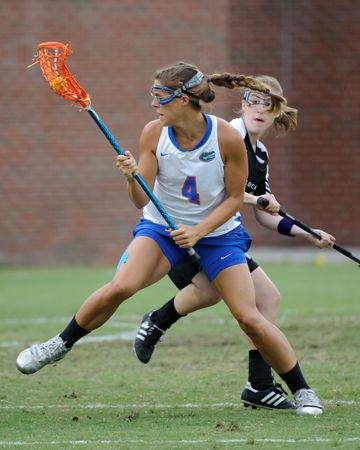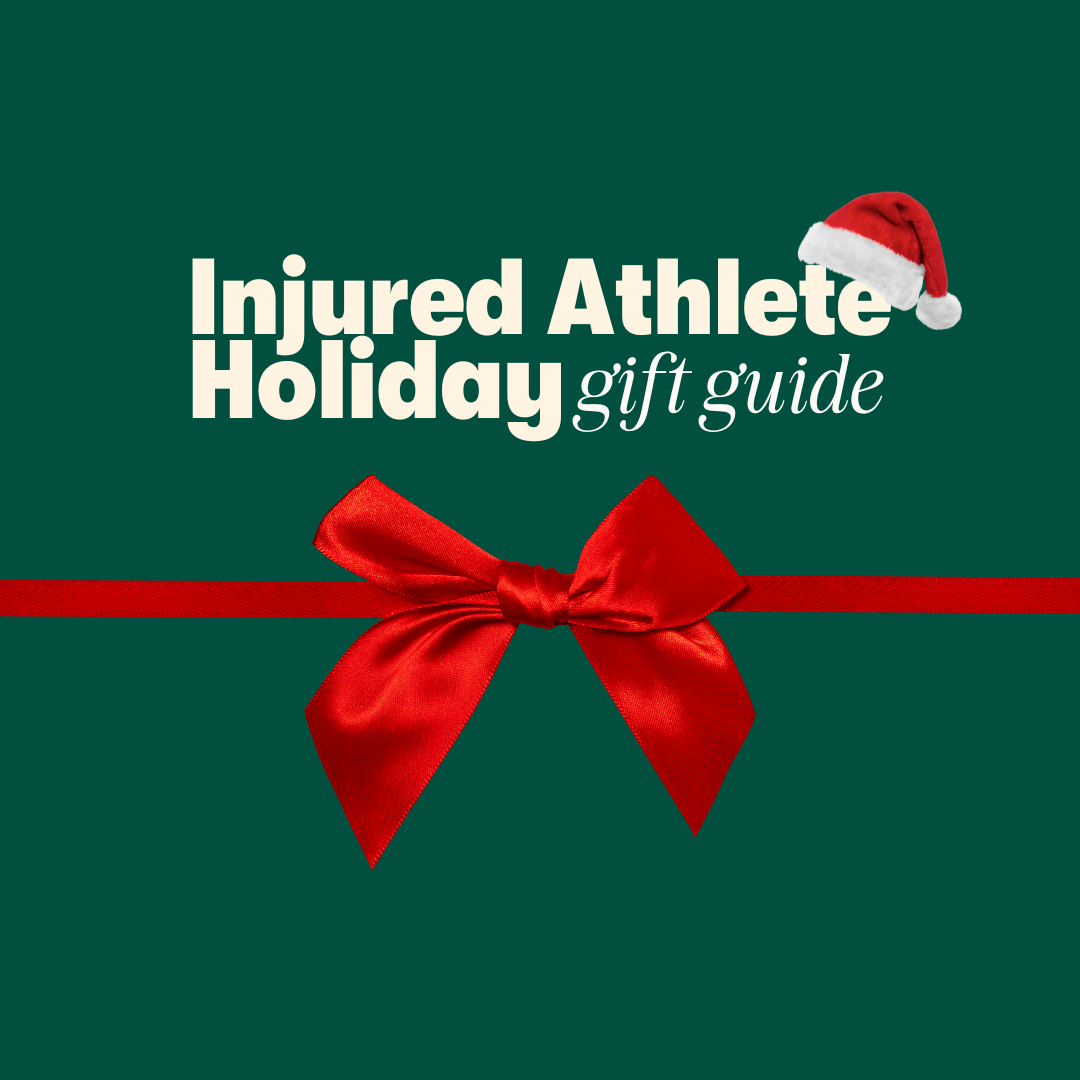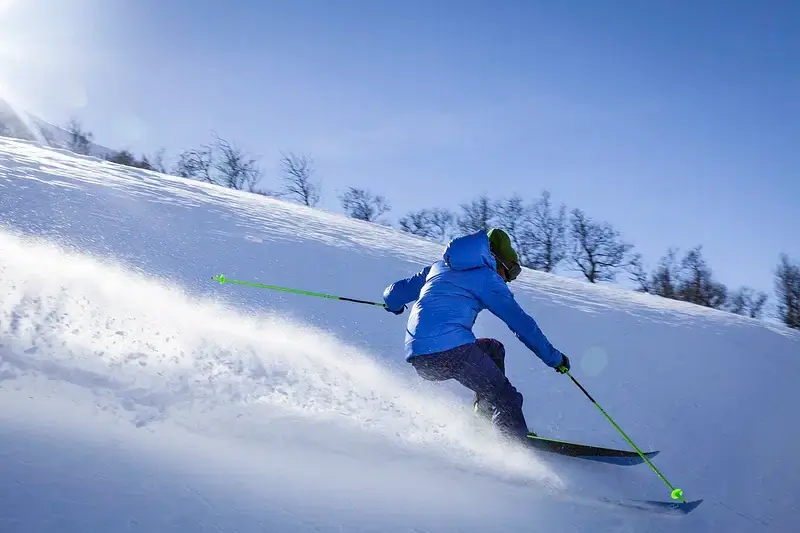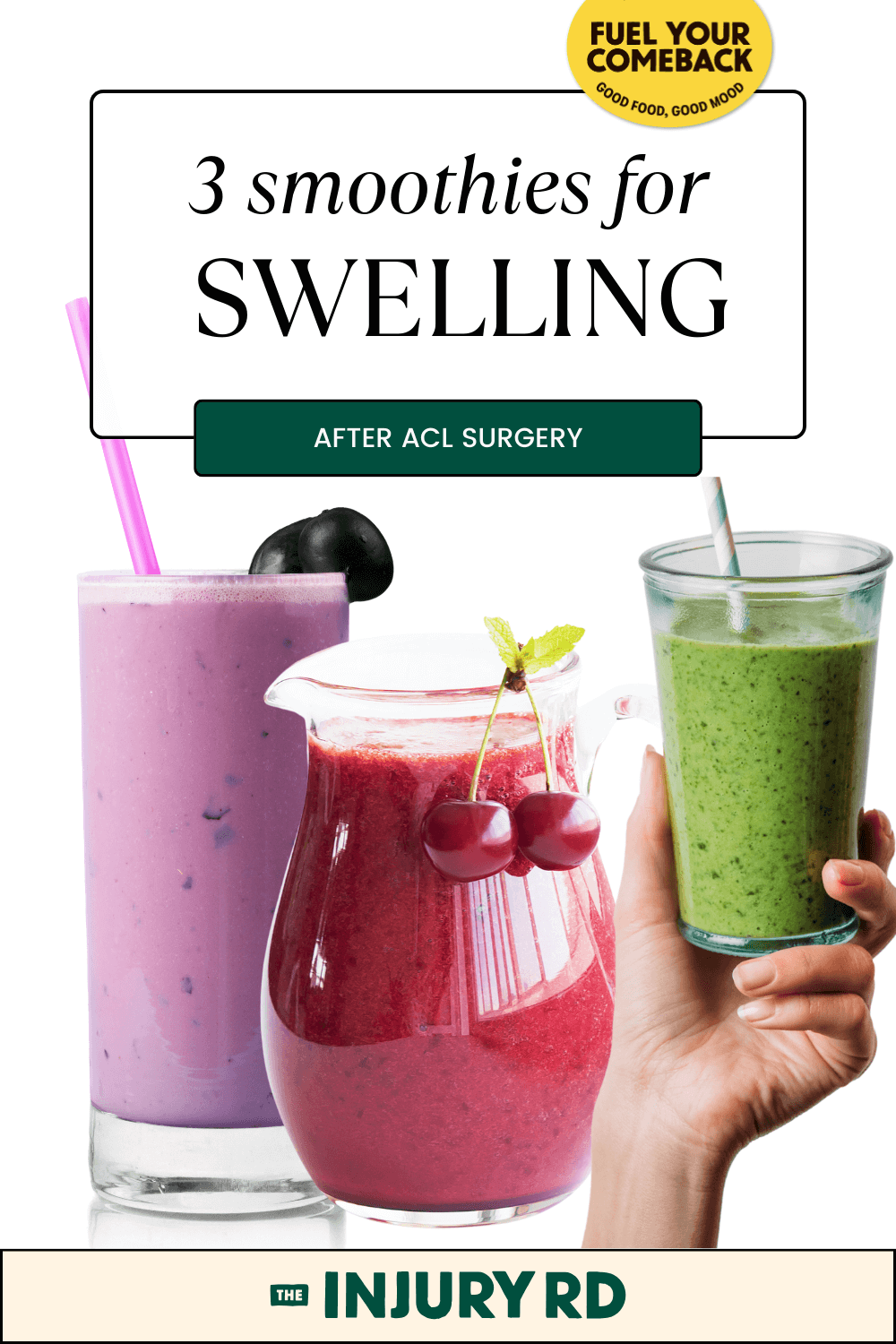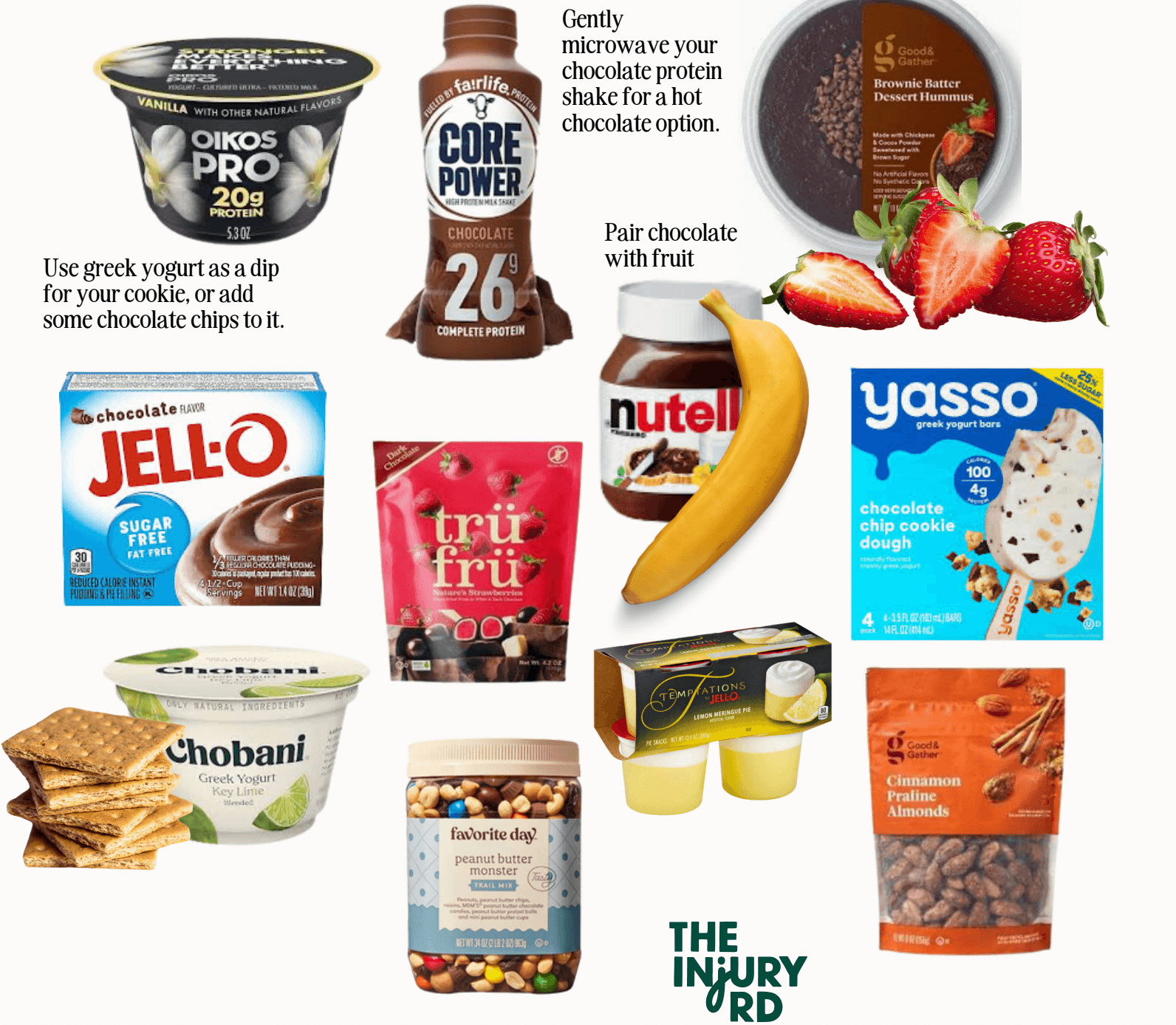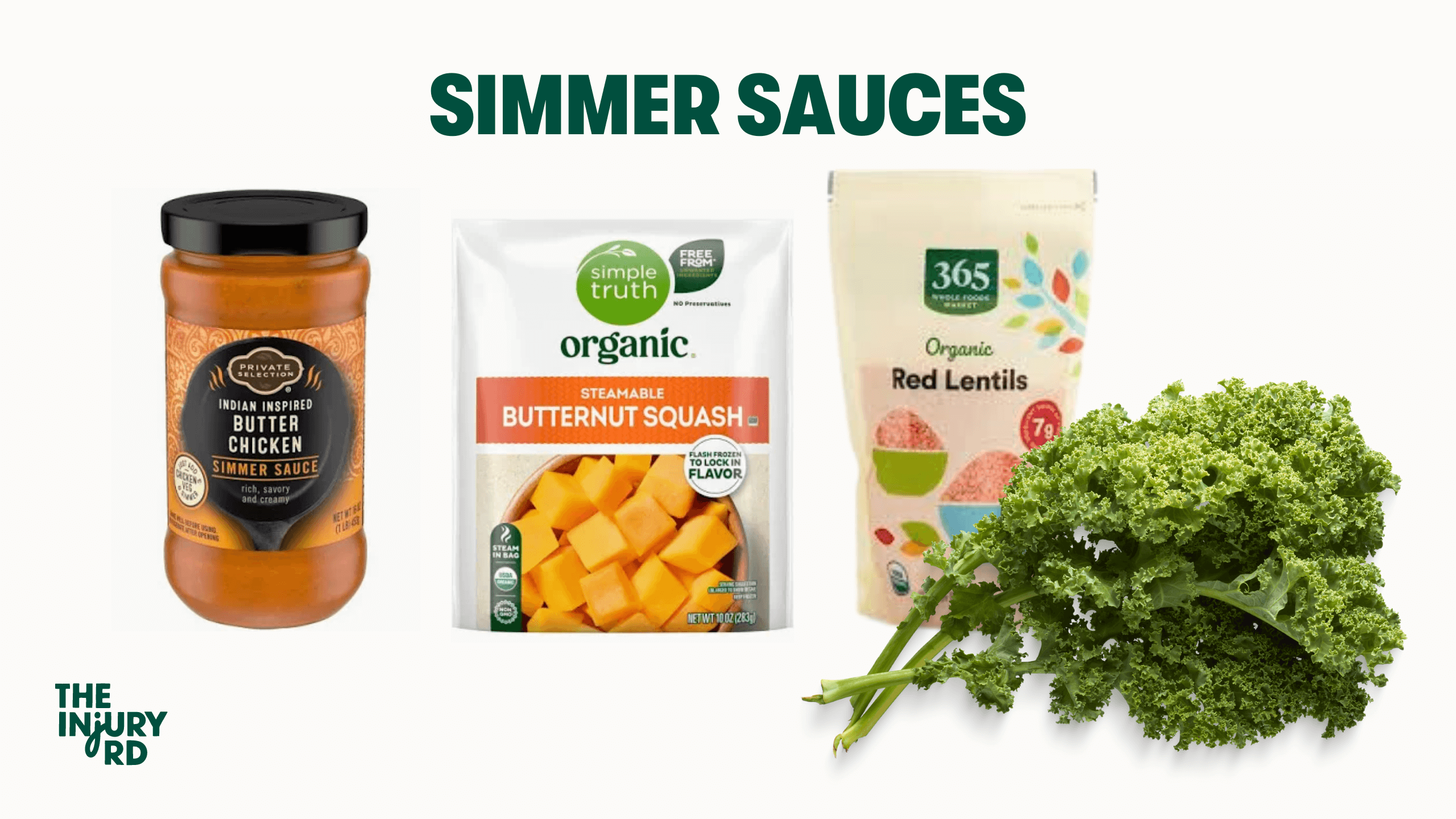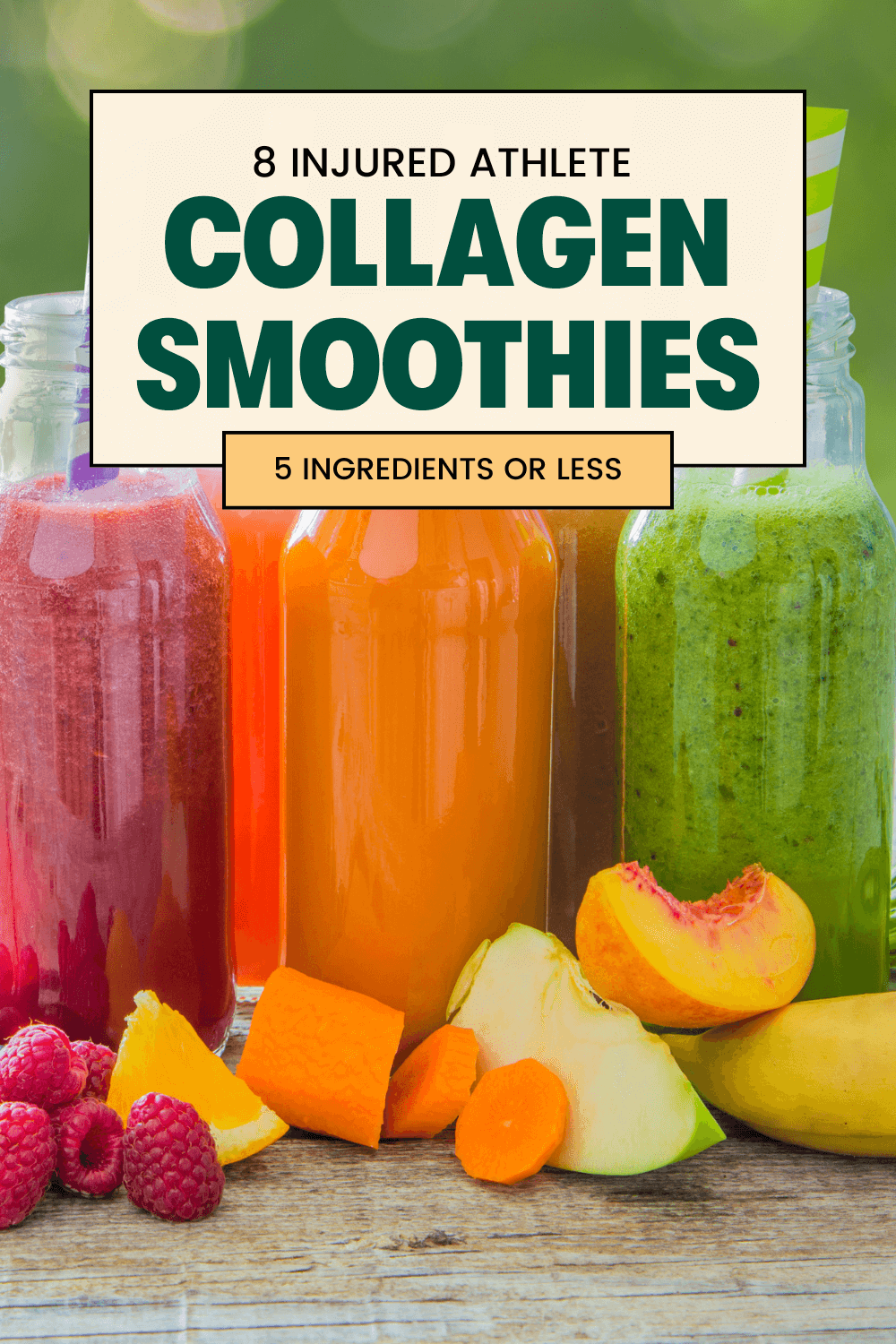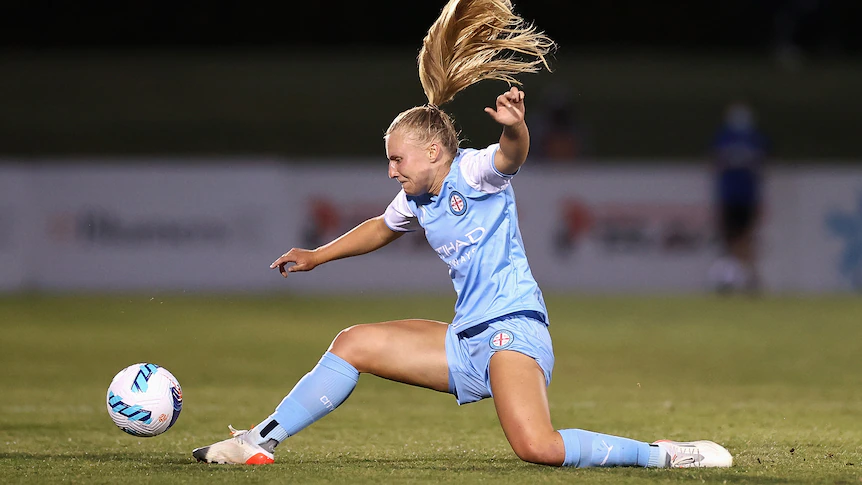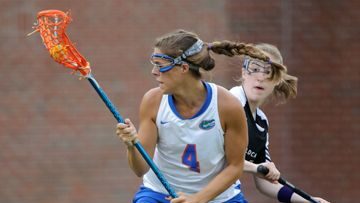Let’s talk about how to minimize muscle loss after an ACL surgery, and maximize gains later on.
SHOW ME THE MUSCLE.

In Part 1, we discussed the ways sh*tty nutrition can SLOW down your healing timeline and nutrition’s direct impact on ligaments.
Let’s talk about another thing that has a MASSIVE impact on your recovery timeline: strength and muscle.
I’ll break our muscle goals into two parts:
- In the early stages of rehab after an ACLR, it’s important to slow muscle loss as much as possible.
- But we can’t do that entirely, so later on, it’s important to rebuild muscle and strength.
Then, obviously, nutrition will support your sport or fitness goals once you return, but that’s a blog for another day. 🙂
Limit muscle loss
There’s some data that tells us the quad on your injured leg can typically be 20-30% smaller 3-months after surgery. There are metabolic and physiological changes causing your body to signal to your muscle, “Hey, sorry buddy, but we don’t need you anymore, so get outta here.”
We can fight these signals with great nutrition strategies. (We can fight them with other strategies, too, which is why having a great sports med team is part of the battle.)
For example, there’s a wonderful case study published detailing the ACLR of two rugby players. Both experienced minimal changes in body composition (about 1-2 lbs. lost in their injured leg), and followed a few key nutrition strategies that I’ll encourage you to follow as well:
1. Eat the right sources of protein
Aim for 2-3g of leucine in every meal (Leucine is a specific amino acid in proteins that triggers muscle growth.) You’ll find it in animal proteins, dairy, beans, and lentils. You can check out an extensive list here.
2. Eat these sources often!
Research tells us muscle growth signaling is more effective when protein is distributed evenly throughout the day. 20-30g every 3-4 hours seems superior.
3. Eat a lot of protein.
Duh, you saw this coming. The goal should be your body weight in protein. (200g for a 200 lb person.)
4. Don’t forget the big picture!
Calories and carbs matter too! Let’s think of your knee like a construction site right now. Protein is the bricks to your house. Carbohydrates are the construction workers. Fats and antioxidants are the cleaners. And total calories is like the boss that’s signing the paychecks every week; gotta have enough money to keep the construction site moving forward.
We can’t build a house without workers. Low carb availability can increase muscle breakdown. I know it’s tempting to cut carbs out, but please don’t!
A bonus if you’d like to go all in. (Why not?)
Creatine might be a great option if the big picture is in check for you. Not every study shows a benefit, but some do, and there’s very little risk here. If you’re already taking your 5g daily dose of creatine, I’d encourage you to continue!
Help muscle gain
Everything above applies here, too. Again, you can’t build a house without the bricks and the workers and the paychecks coming in. A key change though:
1. Eat a lot of protein, but not quite as much as you think.
While aiming to prevent muscle loss, the goal is your body weight in grams of protein. When we shift to focusing on muscle gain, 1.5-1.8 g protein/kg body weight is the goal. It’s less than you might think! Total calorie intake and carbohydrate intake are more important than overdoing the protein intake.
If you’re looking for more tailored advice and examples on how to do this, specific to your life, your phase of rehab, and your goals, join us in Feed the Quad!
__________
Sources:
- Gerber JP, Marcus RL, Dibble LE, Greis PE, Burks RT, LaStayo PC. Effects of early progressive eccentric exercise on muscle size and function after anterior cruciate ligament reconstruction: a 1-year follow-up study of a randomized clinical trial. Phys Ther. 2009 Jan;89(1):51-9. doi: 10.2522/ptj.20070189. Epub 2008 Nov 6. PMID: 18988664.
- Seto J, Orofino A, Morrissey M, Medeiros J, Mason W. Assessment of quadriceps/hamstring strength, knee ligament stability, functional and sports activity levels five years after anterior cruciate ligament reconstruction. American Journal of Sports Medicine. 1988 16;2
- Anderson L, Close GL, Konopinski M, Rydings D, Milsom J, Hambly C, Speakman JR, Drust B, Morton JP. Case Study: Muscle Atrophy, Hypertrophy, and Energy Expenditure of a Premier League Soccer Player During Rehabilitation From Anterior Cruciate Ligament Injury. Int J Sport Nutr Exerc Metab. 2019 Sep 1;29(5):559-566. doi: 10.1123/ijsnem.2018-0391. Erratum in: Int J Sport Nutr Exerc Metab. 2020 Jul 1;30(4):301. PMID: 31034244.
- Papadopoulou S. K. (2020). Rehabilitation Nutrition for Injury Recovery of Athletes: The Role of Macronutrient Intake. Nutrients, 12(8), 2449. https://doi-org.proxy.lib.ohio-state.edu/10.3390/nu12082449
- Mountjoy M, Ackerman KE, Bailey DM, et al 2023 International Olympic Committee’s (IOC) consensus statement on Relative Energy Deficiency in Sport (REDs) British Journal of Sports Medicine 2023;57:1073-1097.
